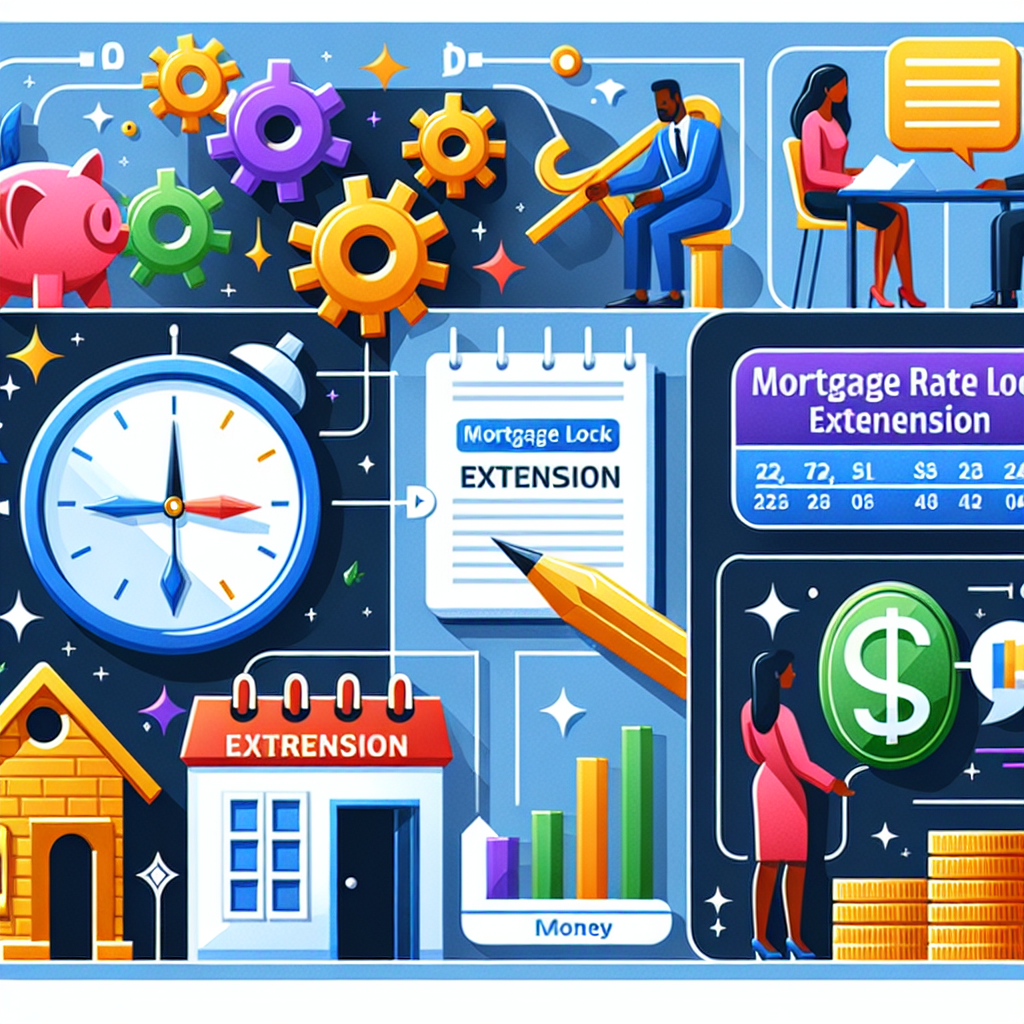Crucial Insights
- A mortgage rate lock extension fee is what you fork over to preserve the originally promised interest rate after your initial lock period ticks away.
- These extension fees usually hover around several hundred bucks but can shift considerably depending on the lender, reasons behind the extension, and other variables.
- Dodging extension fees hinges on staying sharp with your mortgage process and keeping a steady line of communication with your lender.
Understanding Mortgage Rate Lock Extension Fees
Imagine snagging a rate hold on a $400,000 loan at 6.8% interest — your lender grants you the right to lock that specific rate. This can be a lifesaver if your house hunt drags on and you anticipate rates climbing before you close.
Typical Duration of Mortgage Rate Locks
Generally, initial lock periods stretch between 30 and 45 days. However, some lenders are more flexible, offering spans that stretch from 60 to even 120 days without extra charges. Always double-check your lender’s specific stance before sealing the deal.
What Do Rate Lock Extension Fees Usually Cost?
Extension charges tend to fall somewhere between 0.25% and 1% of your loan amount, though many lenders prefer a flat fee. Some lenders split the fee if third parties cause delays — for example, an appraiser or settlement company — charging you just half. If you’re behind the holdup, expect to cover the entire tab.
Not all lenders are sticklers for extension fees, though. Some roll out creative lock deals, like a 60-day lock that allows you to re-lock the rate up to two times within that period at zero extra cost.
Mid-Article Fact Check
According to recent data, the average mortgage rate lock duration in the U.S. ranges from 30 to 60 days, with roughly 70% of lenders imposing a fee if an extension is needed. Extension fees typically make up about 0.5% of the loan amount, affecting thousands of borrowers annually.
Tips to Dodge Extension Fees on Your Mortgage Rate Lock
Although delays caused by lenders or third parties can be outside your control, there are proactive moves to keep your loan sailing smoothly within the original lock window:
- Get savvy about your lender’s rules. Clarify how they handle rate locks and any extension fees. Ask about costs, deadlines, and make sure to snag the fine print. Some lenders toss in a “float-down” feature letting you grab a better rate if market rates slip after you lock in.
- Map out your closing timeline carefully. While pinpointing the exact moment you’ll sign your purchase contract might be tricky, building in enough cushion to shop and make offers helps. After your rate lock kicks in, steer clear of big financial moves. Changes to your credit score or debt ratios puede invalidate your initial locked rate.
- Keep your loan officer in the loop. Though underwriting phases might go quiet sometimes, a diligent officer should update you regularly. Keep all necessary documents handy to jump on any info requests pronto.
- Push back when necessary. If the seller is dragging their feet — maybe they need more time to find a new home — don’t hesitate to ask them to pick up the tab for the rate lock extension.
Frequently Asked Questions
Are Mortgage Rate Lock Extension Fees Refundable?
The short answer: it varies. Many lenders treat the extension fee as non-refundable, so once it’s paid, it’s generally gone for good. Always double-check your lender’s policy before committing.
